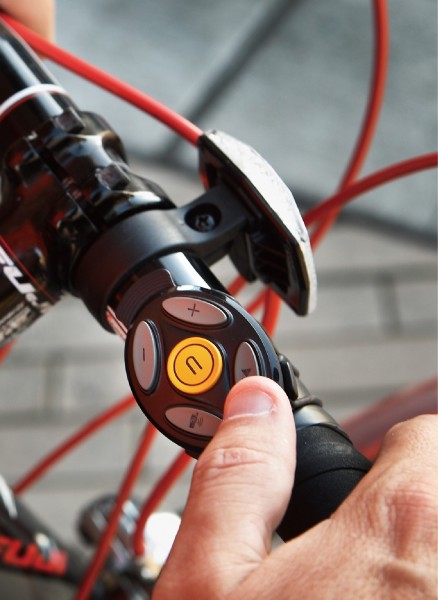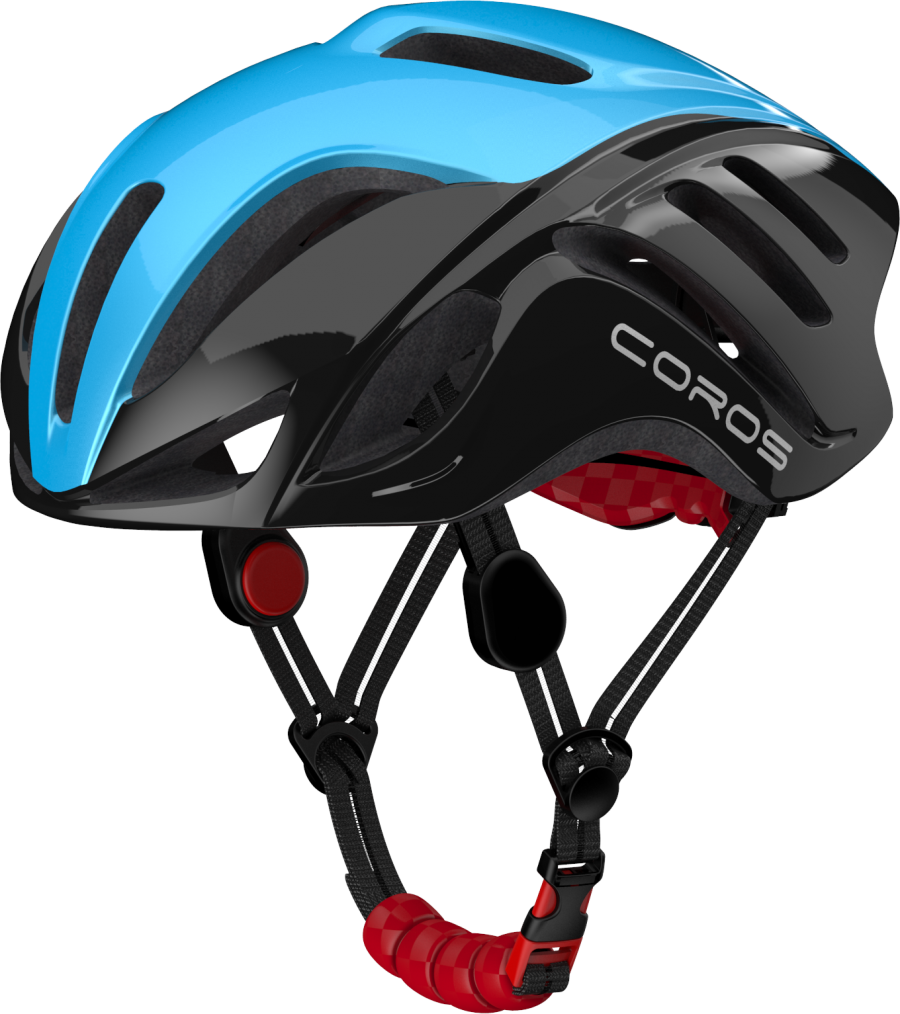Paul Walker puts a more intelligent bike helmet to the test.
Bike gear is getting smarter, and perhaps the most obvious demonstration of this is ‘wearable tech’ – products which integrate tracking and analytics into everyday items. Smartwatches are so last year – now we’ve got smart helmets.
This offering from Coros integrates all manner of cleverness into what looks like a normal bike helmet. But lurking under the EPS foam and in-moulding is a battery which discreetly powers the helmet’s Bluetooth connectivity, bone conduction speakers, microphone and accelerometer-activated emergency notifications. If you have a friend with the same helmet, you can even get an optional-extra walkie-talkie for chats mid bunch-ride.
The aero looks of the helmet suit what I’m looking for and like in a helmet, but the styling isn’t necessarily for everyone; I think that a more traditional, breathable shape or even a visor attachment would appeal more to the recreational rider or mountain biker. The fit is excellent for most head sizes – for me this fit like a glove straight out of the box – but you’ll be out of luck below 54cm or above 61cm. The battery (which cannot be replaced) adds a bit of heft compared to a normal helmet, but that will only really bother the weight-weenies.
At the back of the helmet is a micro-USB charging port, and on/off button. The Frontier is quick to charge and the battery lasts a long time when paired via Bluetooth as a listening/communication device – after two hours of riding with music it had dropped less than 10%, and I kept riding with it and did hundreds of kilometres and forgot all about it. It definitely gets over 30 hours.
The Frontier’s function for phone calls is hugely impressive, and the microphone, hidden in the helmet at the forehead, is a star performer. I made a few calls to test it out, and the person I was speaking to said they heard me like I was sitting indoors speaking through the phone – I was actually riding at 35km/h, on a major Melbourne road with a tram beside me.
Perhaps the biggest drawcard of this helmet – especially for riders wary of riding with headphones – is its integration of bone-conduction speakers into nodules on the helmet straps. The theory behind this design is that rather than sending sound into the ear canal, they transmit vibrations through your cheek bone. They function best when pressed up against your skull, so the straps of your helmet need to sit fairly tight, but they work really well for both music and voice/podcasts, all while allowing awareness of your surroundings.

A remote control (pictured above) mounted by o-rings onto the handlebar or stem skips songs, answers and hangs up calls and of course increases and decreases volume of music and calls – handy as the ambient noise around you changes due to wind or road noise, and more necessary as there’s no physical barrier in your ear from the speaker. Function varies between the experience on Android and iPhone; I tested extensively on both. Volume and music control was occasionally glitchy on Android and flawless on iOS, for example – an outcome not of the helmet’s connection to the remote control hardware, but rather the way the Coros connected to the app I was using to test on the phone (Spotify).
The app issues worsen when it comes to the GPS, tracking and guidance side of things. Rather than using popular third-party apps like Strava or Google Maps, Coros have developed their own. It’s not an improvement, suffering from a litany of problems including terrible phone battery drain (eg. 50% of the battery in an hour), tedious route-input, and hit-and-miss tracking. Coros state that there will be a new version of the app addressing many of these concerns by time of print; based on the inconsistent (and frequently, just plain wrong) experiences we had with the native app, we strongly advise that for now you leave your voice directions, GPS and tracking experience to proven platforms, and focus on the merits of the helmet’s hardware.
Because, ignoring the software side of the product, the Coros Frontier is hugely impressive. As a listening and communication device, I’m extremely fond of its capabilities. The hardware works simply and well, particularly if you’re an iPhone user – there’s still a bit of refinement needed on Android. If you leave your GPS tracking and guidance to the experts, this helmet is a really smart, innovative bit of technology, and could be smarter still if the software catches up.
RRP: $249
Ride On content is editorially independent, but is supported financially by members of Bicycle Network. If you enjoy our articles and want to support the future publication of high-quality content, please consider helping out by becoming a member.



I am not convinced. I don’t really want to wear a helmet in the first place, please don’t ask me to charge it, too.
Can I use the helmet the same as I would use any set of headphones? i.e. Can I connect me phone to the helmet via bluetooth and then use google map directions and hear the audio through the helmet? If I can do that, then why do I need to worry if the native map app has problems?
You can, and we say so – “we strongly advise that… you leave your voice directions, GPS and tracking experience to proven platforms”. It works much better with Google Map directions through the helmet’s audio hardware. But seeing as the helmet is marketed as an all-inclusive product with a native app that is supposed to handle the navigation, we’d be remiss if we didn’t point out that this component of the product had serious flaws.